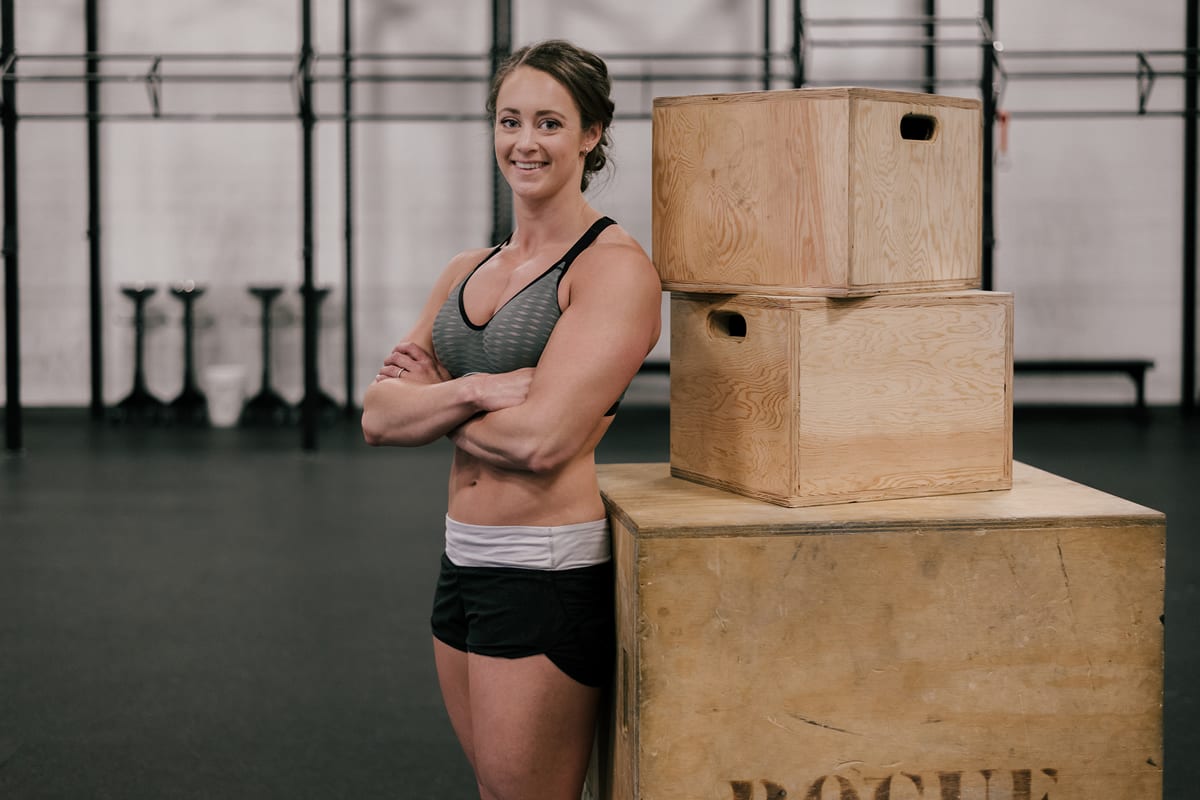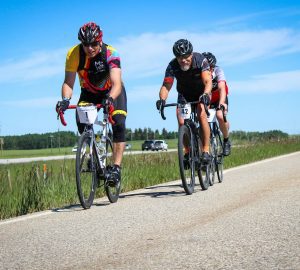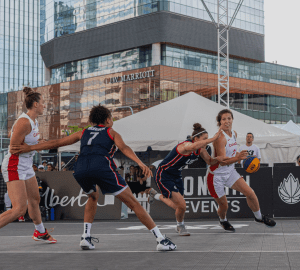Great is one way to describe the rise of Joanne Courtney to the top of the curling world. The Edmonton native together with skip Rachel Homan, lead Lisa Weagle, and third Emma Miskew, is an early favourite to represent Canada at the 2018 Olympic Winter Games in PyeongChang, South Korea
It has been an exciting year for the team. After winning the national championship, they went on to dominate the World Championship in Beijing. It was a big deal for Canadian women’s curling since the last time Canada won gold at the Worlds was in 2008. The team also set a record as the first team to go undefeated through the entire championship winning all 13 games.
“It was an amazing experience given that it was my first time representing Canada,” says Courtney. “Getting to wear the maple leaf was incredible.”
Joanne Courtney was born on March 7, 1989 in Edmonton. She began curling when she was seven years old after her brother had picked it up the year before. She started playing in bonspiels when she was eleven. There were only a few girls her age in the junior program and one of the parents put them together and started getting them to do extra practice on top of the tournaments.
In Canadian curling, the players usually create teams. There’s rarely a scenario where a head coach has tryouts and forms a dream team. Instead, players typically align themselves with three other people who compliment one another and who share the same values and work ethic. At 15 Joanne was lucky enough to be on a team that lost the final at their junior provincial competition and from then on, she was hooked.
“I remember being complimented on my sweeping ability even when I was 15,” she says. “My upper body has always been pretty strong thanks to several years in gymnastics at a young age.”
The conditioning helped her to develop an athletic build and she took note of how the men were sweeping when they were on television. She tried to mimic that on the ice. She became passionate about sweeping in her late teens and once she was in her early twenties, she started investing in a trainer to ensure that she would build muscle and feel like she was a better sweeper than her competition.
A ton of work went into the actual technique of sweeping, but it’s impossible to get the majority of your body weight over the brush if you aren’t strong enough to hold yourself up.
“When I started competing in women’s play seven years ago, I heard that there were curlers in the national program that maxed out at 10 push-ups,” she says. That alone fueled a fire for her to make a big investment in fitness and to out-muscle her competition. “The sport has changed a lot in the last ten years and most curlers at the elite level are in incredible shape. I’m in the best shape of my life but there are times when I don’t feel like it’s a significant advantage anymore because everyone is fit. That motivates me to work extremely hard in our short off-season since I don’t want to fall behind.”
To be a good sweeper, and to heat up the ice as much as possible when sweeping, you want to get your body in a position where you have as much of your body weight as possible on the broom.
“When I’m sweeping, I’m essentially trying to hold a plank at an angle while using my broom to hold me up,” says Courtney. “If you kicked my broom out from under me while I’m laid out sweeping, I would fall on my face. While holding that position, I have to move my broom back and forth and also move sideways down the sheet of ice.”
In curling Joanne Courtney is best known for her sweeping ability and is in the conversation as being one of the best female sweepers in the world. Her skill in sweeping and her fitness level associated with that is the main reason why she got the call three years ago to join the team that she’s on today. She admits that she hasn’t always been the best player when it comes to throwing the rock but her teams have always appreciated the athleticism that she brings to the game.
To play at an elite level it takes a greater toll on the body compared to the recreational level. Like any sport, the high repetition of a movement can lead to injuries. There are a lot of knee injuries and shoulder injuries in curling. That said you could play competitively for a very long time if you can avoid serious injuries. There are many thirds and skips in elite curling who are over fifty. The career span for someone who does a lot of sweeping can be a bit shorter; the more senior sweepers on tour are in their mid-forties.
“Given the high level of commitment involved, I’m not sure how long I will play at this level,” says Joanne. “After the Olympics next year, life may change a bit if my husband and I decide to start a family. I can see myself playing for at least one more Olympic cycle, but the commitment level would change if I have a few little ones to look after.”
The great thing about curling is that it is accessible to a wide variety of people. You can start around six or seven years old and play for as long as your body can handle it. Once your knees can’t handle delivering the stone anymore there’s the option to push the rock with a stick. There’s also wheelchair curling, deaf curling and blind curling at the national and international level.
It’s taken some time for curling to catch on as being viewed as a sport and not just a hobby. The common perception is that it’s a game for middle-aged men who drink a lot of beer and aren’t in the best shape. To be fair, it definitely used to be that way before curling was introduced at the Olympics. There used to be ashtrays built into the benches on the ice and a ton of partying throughout events. If you stop by a recreational league or event, there might be some pints on the backboards but you won’t see that at the elite level.
“Curlers are still very social and enjoy a good time, but most of us know that there’s a time and a place for that,” says Joanne Courtney .
The Olympics have done some amazing things for the sport of curling. Joanne recalls how she used to get made fun of in school when she would talk about her sport. It wasn’t cool like soccer or hockey. She found after the Vancouver Olympics however, that people started to appreciate the intricacies of curling. That year the Canadian men and women’s teams did an incredible job at representing curling.
“I often get asked what sport I play because of my huge arms, and there used to be a lot of surprised expressions when people would find out it’s curling. There’s still some surprise but I feel like it’s less than before,” she says.
Joanne’s Curling Basics
“It’s basically shuffle board on ice. Each team alternates in throwing rocks down the sheet of ice and after eight rocks have been thrown by both teams, the team with the rock(s) closest to the middle of the rings scores. Each time all of the rocks are thrown from one end to the other is called an “end”. We do that eight or ten times depending on the format of competition and it takes about two to two-and-a-half hours to play a game. Teams are made up of four players with each person throwing two rocks (the positions are called lead, second, third and skip). I play second, so I throw the second set of rocks. When it isn’t my turn to throw, I sweep. The heat on the ice created by sweeping decreases the friction between the rock and the ice and allows it to travel farther (depending on who you ask effective sweeping can drag a rock six to eight feet farther than it would go on its own – that is super helpful when you’re trying to place the rock in a specific spot as it gives the thrower more room for error). Sweeping also affects the trajectory of the rock. It keeps it from grabbing the pebble (tiny droplets of water on the ice) and makes it curve (or curl) less.”









5 Comments